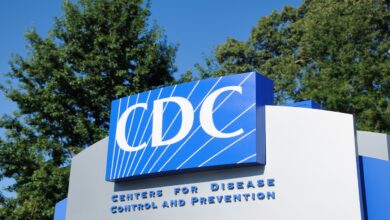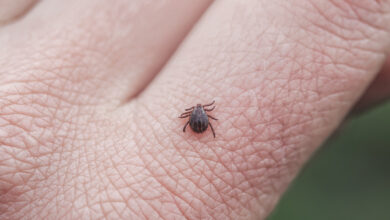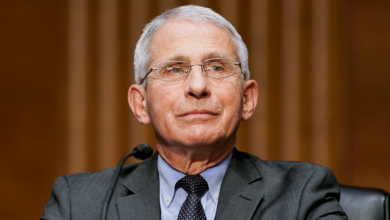Depression, anxiety fell as US COVID-19 restrictions ended in 2021: CDC data

Symptoms of depression and anxiety among U.S. adults fell over the first half of 2021, as Americans received COVID-19 vaccine shots and state lockdowns and other restrictions were lifted.
According to a study from the U.S. Centers for Disease Control and Prevention (CDC) released on Tuesday, increases and decreases in the frequency of reported symptoms at the state and national levels “mirrored the weekly number of new COVID-19 cases during the same period.”
IMPLANTED DEVICE STIMULATES PATIENT’S BRAIN, TREATS SEVERE DEPRESSION, RESEARCHERS FIND
The agency also found that levels reported in June remained elevated compared with National Health Interview Survey (NHIS) estimates from 2019 and that the frequency of symptoms had increased after August of 2020, peaking from December of last year to January 2021.
The CDC used survey data obtained from the bi-weekly U.S. Census Bureau Household Pulse Survey (HPS), which began in April 2020 and was drawn from a selection of the U.S. Census Bureau’s master address file that includes both e-mail and mobile telephone numbers of approximately 117 million U.S. housing units in all 50 states and Washington, D.C.
The analysis looked at data collected from the 19 biweekly surveys from August 2020 to June 2021, with breaks over December 22, 2020, through January 5, 2021, and March 30 to April 13, 2021.
Researchers analyzed more than 1.5 million responses for all 19 waves to obtain the results.
Nationally, the average frequency of anxiety symptoms increased by 13% from August 2020 to December 2020 and decreased by 26.8% from December 2020 to June 2021.
Depression severity rose by 14.8% from August 2020 to December 2020 and decreased by almost a quarter from December 2020 to June 2021.
“Across the entire study period, the frequency of anxiety and depression symptoms was positively correlated with the average number of daily COVID-19 cases. Mental health services and resources, including telehealth behavioral services, are critical during the COVID-19 pandemic,” the CDC wrote.
SEASONAL AFFECTIVE DISORDER: HOW TO RECOGNIZE IT
Mississippi was found to be among the states with the largest increase in anxiety and depression percentages, while Florida and New York had the smallest percentage increase in depression and anxiety percentages, respectively.
There were at least six limitations to the study, the agency noted, including that the fifth decrease in the frequency of symptoms observed through June 2021 occurred before the recent surge in delta variant cases.
The researchers added that delivery systems for mental health care and resources, like telehealth behavioral services, are critical during the pandemic – particularly among populations that were disproportionately impacted by the virus.
The CDC said that members of populations in harder hit areas might be “more vulnerable to the psychological consequences of COVID-19” and that the mental health impact of the pandemic could have community-specific effects when morbidity and mortality rates are increasing.
“Fluctuations in symptoms of anxiety and depression during the pandemic highlight the importance of real-time monitoring of mental health symptoms. Tracking these outcomes, including by demographic characteristics, can provide early indicators of potential increases in the demand for mental health services and for the health care providers needed to treat persons with clinically significant symptoms,” the study concluded.
A previous CDC report from August 2020 found that 31% of U.S. adults surveyed in June reported symptoms of anxiety or depression – numbers NIMH (National Institute of Mental Health) Dir. Joshua Gordon wrote were nearly double the rates expected before the pandemic.
In December, the percentages of U.S. adults who experienced at least one of these disorders rose to 42%: an 11% increase from the previous year, Nature reported in February.
Another CDC survey released in July found that more than half of public health workers reported mental health problems during the pandemic.
CLICK HERE TO GET THE FOX NEWS APP
Gordon said that crisis intervention services like SAMHSA’s Disaster Distress Helpline (1-800-985-5990) and the Crisis Text Line (text HOME to 741741) reported substantial increases in volume early in the pandemic and pointed out that the CDC, NIMH and other agencies had been working to raise awareness of available mental health resources, including the Suicide Prevention Lifeline (1-800-273-TALK).
The National Suicide Prevention Lifeline provides free and confidential emotional support to people in suicidal crisis or emotional distress, 24/7.
If you or someone you know is having thoughts of suicide, please contact the National Suicide Prevention Lifeline at 1-800-273-TALK (8255).
Source link






